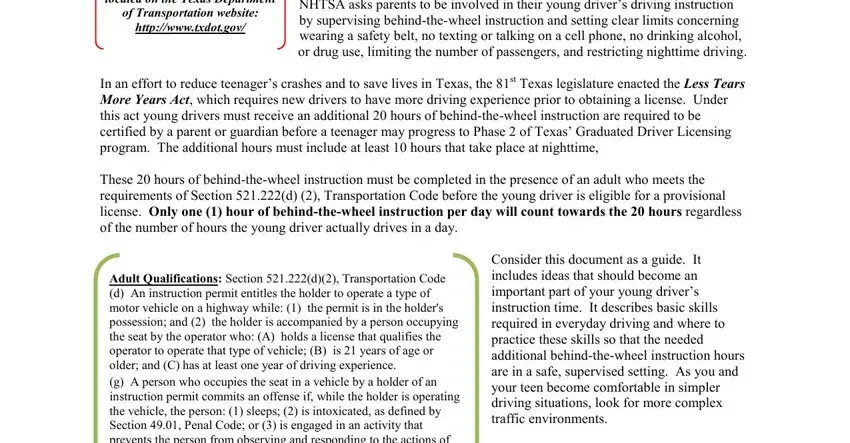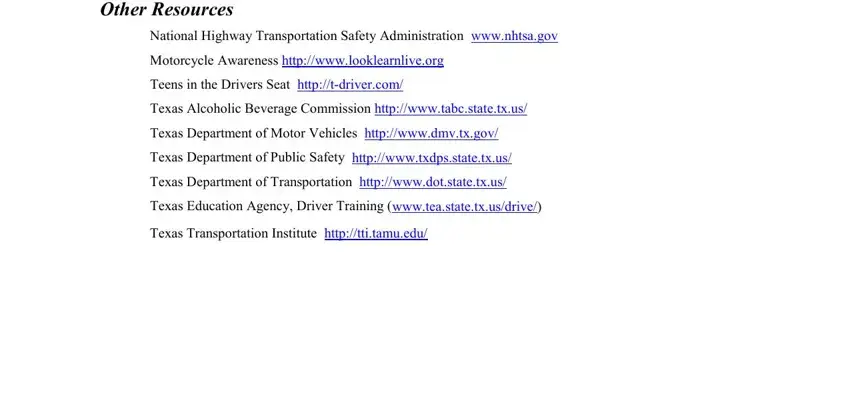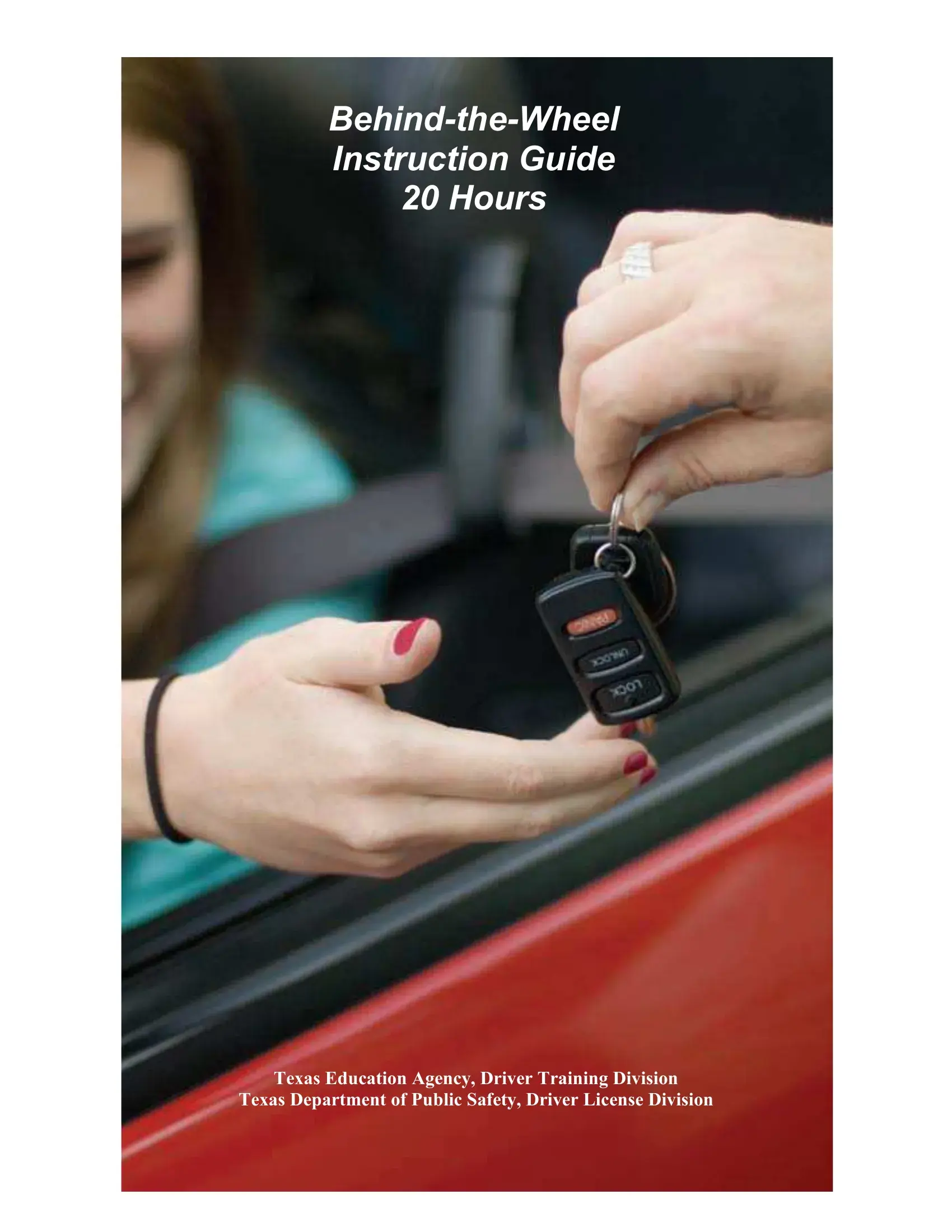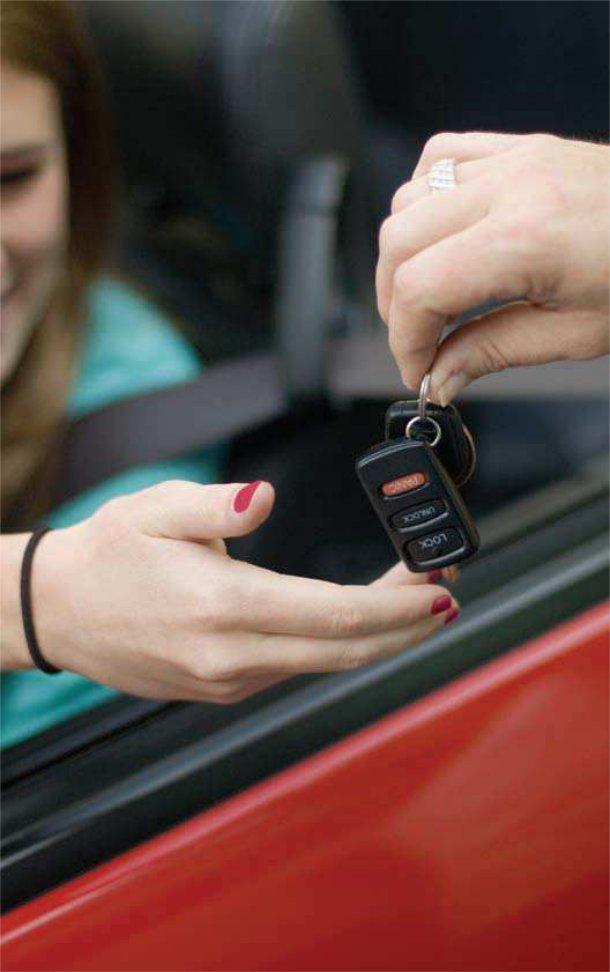20 HOUR BEHIND THE WHEEL PRACTICE LOG
Behind-the-Wheel
Instruction Guide
20 Hours
Texas Education Agency, Driver Training Division
Texas Department of Public Safety, Driver License Division
Special Thanks
… to all the people who contributed to the development of this Guide.
This Guide was developed by the Texas Education Agency, Driver Training Division in partnership with the Texas Department of Public Safety, Driver License Division. The information contained in this Guide is not intended to be a comprehensive document for teaching good driving habits. As a helpful guide it contains information that, if used, can help reduce risk. Good judgment should be used to adapt this information to different driving situations and conditions.
This Guide supports the important partnerships between driver education and training instructors, young drivers and their parents/guardians. It is our hope that this information will contribute to a lifetime of reduced risk driving habits.
Special thanks go to the Idaho Department of Education, Oregon Department of Transportation, and the Virginia Department of Education for the use of their parent curriculum guides.
Robert Scott
Commissioner of Education
Ray Glenn
Deputy Commissioner School District Leadership and Educator Quality
Jerel Booker
Associate Commissioner Educator Quality and Standards
Julie Harris-Lawrence
Deputy Associate Commissioner Student Support
Victor Alegria
Director, Driver Training Division
Copyright © Notice The materials are copyrighted © and trademarked ™ as the property of the Texas Education Agency (TEA) and may not be reproduced without the express written permission of TEA, except under the following conditions:
1)Texas public school districts, charter schools, licensed driver education schools, and Education Service Centers may reproduce and use copies of the Materials and Related Materials for the districts and schools’ educational use without obtaining permission from TEA.
2)Residents of the state of Texas may reproduce and use copies of the Materials and Related Materials for individual personal use only without obtaining written permission of TEA.
3)Any portion reproduced must be reproduced in its entirety and remain unedited, unaltered and unchanged in any way.
4)No monetary charge can be made for the reproduced materials or any document containing them; however, a reasonable charge to cover only the cost of reproduction and distribution may be charged.
Private entities or persons located in Texas that are not Texas public school districts, Texas Education Service Centers, or Texas charter schools or any entity, whether public or private, educational or non-educational, located outside the state of Texas MUST obtain written approval from TEA and will be required to enter into a license agreement that may involve the payment of a licensing fee or a royalty. For information contact: Office of Intellectual Property, Texas Education Agency, 1701 N. Congress Ave., Austin, TX 78701-1494; phone 512-463-9270 or 512-463-9713; email: copyrights@tea.state.tx.us.
Federal law prohibits discrimination on the basis of race, color, national origin, gender, religion, age, disability, political beliefs, sexual orientation, or marital or family status in any educational programs or activities receiving federal financial assistance. (Title VI and VII of the Civil Rights Act of 1964; Title IX of the Educational Amendments of 1972; Section 504 of the
rehabilitation Act of 1973, and the Americans with Disabilities Act of 1990.) It is the policy of the Texas Education Agency not to discriminate in any educational programs or activities or in employment practices.
2
Driving provides teenagers greater mobility. The knowledge, skills, judgment, behaviors, and understanding necessary to operate a vehicle safely take time to develop. Safe drivers are not just born. In the driver education course your young driver acquired new and important knowledge and skills about basic vehicle operation such as turning, backing, and parking. Usually, these skills are not difficult for young drivers to master. However, other skills, such as judgment and understanding, require more practice.
Driving is not a right; it
is a privilege with
obligations,
responsibilities, and
consequences.
In 2008, motor vehicle crashes were the number one cause of death for young people ages 15 to 20 years old as 3,873 passenger vehicle occupants this age
were killed in motor vehicle crashes with ½ (2,1,42) not wearing a safety belt at the time of the fatal crash. In addition, 228,000 were injured in these motor vehicle crashes.
Texas Traffic Statistics may be located on the Texas Department of Transportation website: http://www.txdot.gov/
The U.S. Department of Transportation’s National Highway Traffic Safety Administration (NHTSA) endorses that “parental involvement can mean the difference between life and death” during a teenager’s driving experience. NHTSA asks parents to be involved in their young driver’s driving instruction by supervising behind-the-wheel instruction and setting clear limits concerning wearing a safety belt, no texting or talking on a cell phone, no drinking alcohol, or drug use, limiting the number of passengers, and restricting nighttime driving.
In an effort to reduce teenager’s crashes and to save lives in Texas, the 81st Texas legislature enacted the Less Tears More Years Act, which requires new drivers to have more driving experience prior to obtaining a license. Under this act young drivers must receive an additional 20 hours of behind-the-wheel instruction are required to be certified by a parent or guardian before a teenager may progress to Phase 2 of Texas’ Graduated Driver Licensing program. The additional hours must include at least 10 hours that take place at nighttime,
These 20 hours of behind-the-wheel instruction must be completed in the presence of an adult who meets the requirements of Section 521.222(d) (2), Transportation Code before the young driver is eligible for a provisional license. Only one (1) hour of behind-the-wheel instruction per day will count towards the 20 hours regardless of the number of hours the young driver actually drives in a day.
Adult Qualifications: Section 521.222(d)(2), Transportation Code
(d)An instruction permit entitles the holder to operate a type of motor vehicle on a highway while: (1) the permit is in the holder's possession; and (2) the holder is accompanied by a person occupying the seat by the operator who: (A) holds a license that qualifies the operator to operate that type of vehicle; (B) is 21 years of age or older; and (C) has at least one year of driving experience.
(g)A person who occupies the seat in a vehicle by a holder of an instruction permit commits an offense if, while the holder is operating the vehicle, the person: (1) sleeps; (2) is intoxicated, as defined by Section 49.01, Penal Code; or (3) is engaged in an activity that prevents the person from observing and responding to the actions of the operator.
Daytime means the period beginning one-half hour before sunrise and ending one-half hour after sunset.
Nighttime means the period beginning one-half hour after sunset and ending one-half hour before sunrise.
Consider this document as a guide. It includes ideas that should become an important part of your young driver’s instruction time. It describes basic skills required in everyday driving and where to practice these skills so that the needed additional behind-the-wheel instruction hours are in a safe, supervised setting. As you and your teen become comfortable in simpler driving situations, look for more complex traffic environments.
Be aware that young drivers have more difficulty maintaining attention and understanding how, when, what, who, and where to watch. Their ability to judge distance also can be challenging.
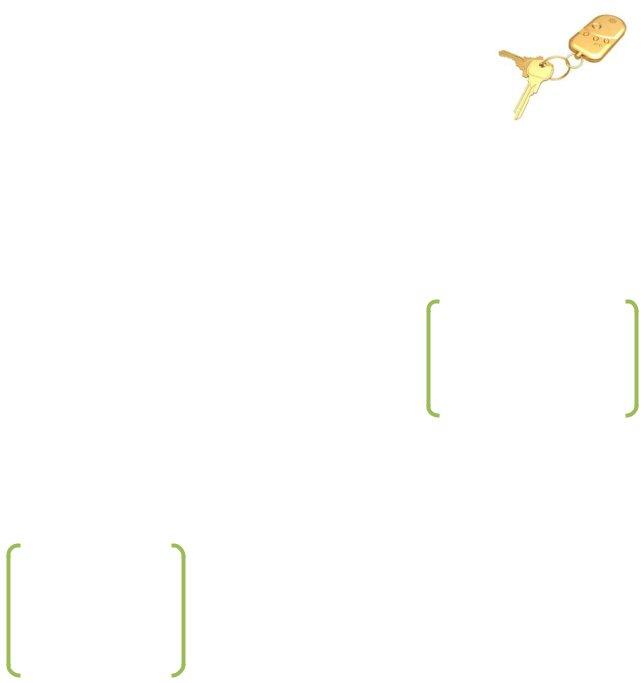
Whether you live in a rural setting or a large community, allow your teenager to observe, explore, and drive in progressively larger, more complex settings. For instance, allow your teenager to practice when weather limits visibility or there is reduced traction, or to drive on busier streets.
Your teenager’s thought process, decision-making, and problem-solving skills will develop with appropriate guidance, encouragement, and feedback. Reinforce good habits such as longer following distances and avoidance of distractions. Take the time to discuss the goals, driver behaviors, and skills you practiced. The knowledge, skills, and behaviors your teen learns now can become part of safe driving and reduced risk driving practices that last a lifetime. This also can be an enjoyable and special time with your teenage driver.
Texas Graduated Driver License Program
Phase One
Applicants under age 18 must hold an instruction permit or hardship license for a minimum of six months prior to issuance of a provisional Class A, B, or C driver license. In addition, the minimum age of the person who must accompany any instruction permit holder during the operation of the vehicle is 21 years of age. Except for hardship licenses, a minor is not eligible to graduate to Phase Two (provisional license) for a Class A, B, or C driver license until they have completed this phase and met all other current licensing and age requirements.
The instruction permit must remain valid during the mandatory six-month period to meet this regulation. If an instruction permit is suspended/revoked during this period, upon the completion of the suspension period, the remaining six-month period must be completed to meet the GDL Phase
One requirement.
Once the applicant has held a valid instruction permit or hardship license for a minimum of six months, has reached the age of 16 for a Class C license (17 years of age for a Class A or B non-CDL), and has completed both the classroom and laboratory (driving) portions of driver education, they are eligible to "graduate" to Phase Two.
Under the GDL program, there is no minimum time that a person must hold a restricted motorcycle or moped license before they can apply for a Class M license.
Phase Two
Phase Two restricts the driving privileges of persons under 18 years of age during the twelve-month period following the issuance of an original Class A, B, or C driver license (Provisional License). These persons may not operate a motor vehicle with more than one passenger in the vehicle under the age of 21 who is not a family member. They may not operate a motor vehicle between midnight and 5:00 a.m. unless the operation of the vehicle is necessary for the operator to attend or participate in employment or a school-related activity or because of a medical emergency.
A teenager under the age of eighteen may not operate a motor vehicle while using a wireless communication device, except in case of an emergency.
Under Phase Two, a person under 17 years of age who holds a restricted motorcycle license or moped license, during the twelve-month period following the issuance of an original motorcycle license or moped license, may not operate a motorcycle or moped between midnight and 5:00 a.m. unless the person is in sight of the person's parent or guardian or the operation of the vehicle is necessary for the operator to attend or participate in employment or a school-related activity or because of a medical emergency.
The license restriction will state, "TRC 545.424 applies until MM/DD/YY" and will indicate the date in which the second phase of the graduated driver license expires for the person who holds that license. Upon completion of the twelve-month period, the above time and/or passenger restrictions no longer apply. The licensee may wish to apply for a duplicate license at a driver license office to remove this restriction. A fee is required to obtain a duplicate license. If not, this restriction will be removed at the time the applicant renews the license on their next birthday, provided the Phase Two 12-month time has lapsed.
5

